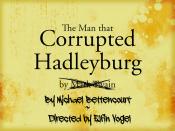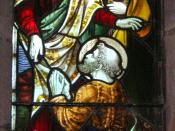Erected during age of Transcendentalism during the mid 19th century until its plunge after the Civil War, Realism and Naturalism, were ideas that are brought up in philosophical thinking. Both Realism and Naturalism are logical concepts upon how to describe the affects upon ones self and are popularly expressed through art and literature. Though they seem similar, they, in many ways, greatly differ from one another. An example of these differences would be that their notions greatly contradict. Realism is defined as the belief that it is the person's choices and actions that affect the outcome of that person, not the environment. This opposes the Naturalistic way of thinking which is that, it is the person's surroundings and environment in which affects the person's outcome. Such examples of Realism in Literature would be that of Mark Twains The Man that Corrupted Hadleyburg. In this story a stranger, once a poor gambler, drops off forty-thousand dollars worth of gold, which he won from gambling, to a lady's house.
And for the lady to find the citizen of Hadleyburg who, long before, had given him twenty dollars to start his life over again, to give him the sack of gold to compensate for the citizens generosity. The lady (Mrs. Richards) deciding along with her husband to go public with the story ends up corrupting the once, peaceful and honest town. This great example of Realism fulfills the definition that it is the persons motive and action not their environment that affects their fate, in contrast to Naturalism which contradicts it. Literature, in that era, were mostly Naturalistic stories, such great stories as Edith Wharton's Ethan Frome and The Octopus. But, in opinion, the greatest expression of Naturalism is that of Jack London's tales, specifically, London's story To Build a Fire.


